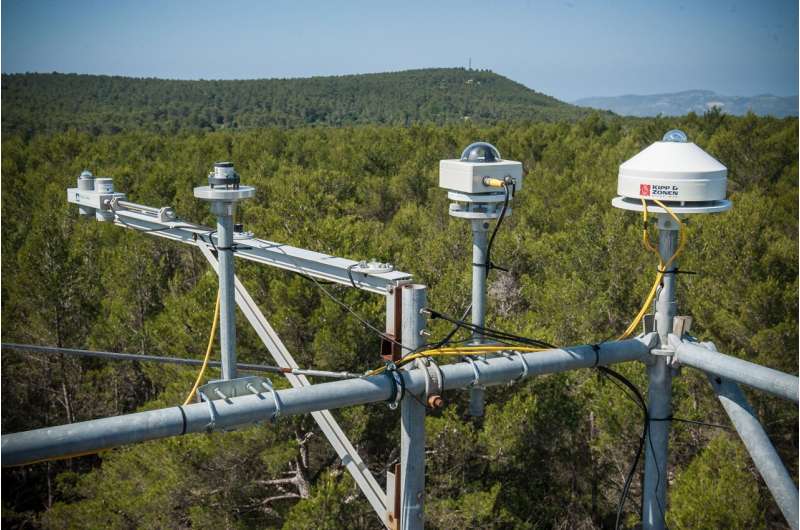Estimating forest desiccation to better predict fire danger

Desiccation of tree foliage is a key factor in the spread of fires. However, during droughts, changes in the water content of forest canopies remain poorly understood. Scientists from INRAE and the CNRS have developed the first model to predict canopy water content during drought and heat waves. Their results, published in the journal New Phytologist, could enable the development of fire danger forecasting models that include the role of vegetation in their calculations.
Climate change and increasing drought are making forest fires a growing threat in many parts of the world, including France. Currently, fire departments base their forecasts on climate and weather data without considering the role played by vegetation. For example, the water content of tree foliage is a key factor in the spread of fires, but until now, little research existed on the connection between vegetation response to drought and fire danger.
For this reason, plant water function specialists and forest fire specialists teamed up to develop the first model for predicting the water content of plant canopies that includes the response mechanisms of trees to soil and atmospheric droughts.
The researchers based their work on INRAE's SurEau model on plant water function launched in 2017. This model incorporates everything known about plant water function to predict the risk of tree desiccation and mortality. In order to develop and test their hypotheses under real conditions, researchers used data collected from the Puéchabon experimental forest site (CNRS), including tree-to-atmosphere water flow, the level of water stress in the trees and the water content of their leaves.
The SurEau model can now accurately predict water content dynamics in forest canopies during droughts and heat waves. Scientists have thus demonstrated that certain physiological features of trees are key to determining a risk of desiccation. These features include how water is used by trees depending on factors such as leaf surface area or root depth, and the ability of a given species to maintain an internal water circulation circuit, thus reducing susceptibility to cavitation.
Such information, used by the new model to predict desiccation dynamics, is widely accessible in databases targeting the characteristics of different species and vegetation indexes collected remotely. It can be adapted to any type of species and ecosystem.
By establishing a link between forest fire risk, climate and water function in trees, this model predicts an increase in forest vulnerability due to climate change. In the future, the model could help predict fire danger by incorporating the role of vegetation in calculations.
More information: Julien Ruffault et al, Plant hydraulic modelling of leaf and canopy fuel moisture content reveals increasing vulnerability of a Mediterranean forest to wildfires under extreme drought, New Phytologist (2022). DOI: 10.1111/nph.18614
Journal information: New Phytologist
Provided by INRAE





















